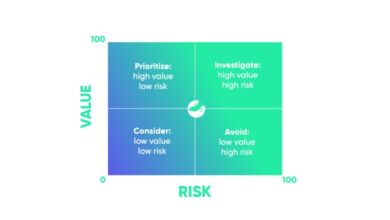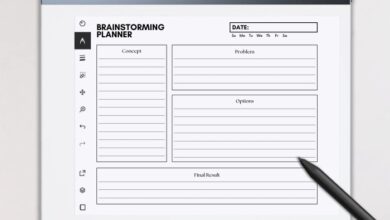
Goals are meant to be adjusted here is how – Goals are meant to be adjusted; here’s how. Setting goals is a crucial part of personal and professional development, but rigidity can hinder progress. Life throws curveballs, and circumstances change. This guide explores the importance of flexibility in goal-setting, offering practical strategies for adapting your plans and achieving desired outcomes.
Understanding when and how to adjust your goals is key to success. This in-depth exploration covers various aspects, from recognizing the need for adjustment to implementing changes effectively and maintaining flexibility throughout the process. We’ll examine common pitfalls to avoid and provide illustrative examples to solidify the concepts.
Understanding Adjustment
Goal setting is a powerful tool for achieving aspirations, but rigidity in the face of evolving circumstances can hinder progress. Life is dynamic, and our plans need to adapt to the ever-changing landscape. Understanding when and how to adjust goals is crucial for maintaining motivation and achieving desired outcomes.Adjusting goals is not a sign of failure, but rather a testament to adaptability and a willingness to learn and grow.
It’s about acknowledging that the initial plan might not perfectly reflect the realities encountered along the way. Recognizing these shifts and proactively adapting is essential for maintaining a productive and fulfilling journey.
Reasons for Goal Modification
Goals may need modification due to various factors. External circumstances, such as unexpected job loss, family emergencies, or economic downturns, can significantly impact the feasibility of previously established objectives. Internal shifts, such as changes in priorities, values, or personal circumstances, can also necessitate modifications. For instance, a health concern might require adjustments to a fitness goal. Recognizing and addressing these factors allows for a more realistic and achievable path forward.
Importance of Flexibility in Goal Setting
Flexibility is an essential trait in goal-setting. A rigid approach can lead to frustration and disillusionment when faced with unforeseen obstacles. Embracing flexibility allows for proactive adjustments, keeping the overall direction intact while adapting to the specifics of the situation. This adaptability is key to sustaining motivation and maintaining a positive outlook. It fosters a more resilient and adaptable mindset, crucial for long-term success.
Framework for Recognizing Goal Adjustment
A framework for recognizing when a goal requires adjustment can be structured as follows:
- Regular Review: Establish a consistent schedule for reviewing progress toward goals. This could be weekly, monthly, or quarterly, depending on the complexity of the goal. This periodic review allows for the identification of any deviations from the planned trajectory.
- Objective Evaluation: Critically assess the current circumstances and how they may impact the goal. Identify any obstacles or unforeseen challenges. This evaluation should be unbiased and based on factual data.
- Alternative Planning: Once identified, develop alternative strategies or adjusted timelines for achieving the desired outcome. This stage involves considering potential solutions to the obstacles encountered. It’s crucial to maintain a proactive mindset.
- Flexibility in Timeline: Recognize that goals may take longer to achieve than initially anticipated. Adjusting the timeline allows for a more realistic expectation of the time needed to reach the objective.
Examples of Goals Requiring Modification
Goals can require modification across various areas of life. A career goal, for example, may need adjustment if a new industry trend emerges that requires specialized skills or if the company downsizes. Personal goals, such as a fitness plan, may need modification due to a health issue or a change in lifestyle. Financial goals might require adjustments due to economic fluctuations or unforeseen expenses.
Acknowledging the possibility of modification allows for a proactive response to life’s changes.
Identifying Areas for Adjustment
Goal adjustment is a crucial aspect of effective goal setting. It acknowledges that life is dynamic and that circumstances may necessitate modifications to our initial plans. Rather than viewing adjustments as setbacks, we should recognize them as opportunities to refine our strategies and increase the likelihood of achieving our objectives. This section delves into the specifics of identifying areas requiring adjustment, focusing on evaluation, feedback, and self-reflection.Understanding how to identify and address areas for adjustment in your goals is vital to maintaining momentum and preventing frustration.
Goals are fluid, not fixed. Adjustments are key to success, and sometimes those adjustments are huge. Take Genachowski’s promises for spectrum solutions, for example, genachowski promises spectrum solutions — understanding the evolving landscape and adapting your strategy is vital. Ultimately, flexibility in goal-setting is crucial for achieving lasting results.
A rigid adherence to a predetermined plan, without considering evolving circumstances or performance, can lead to stagnation and a sense of disconnect between the goal and your current reality. This proactive approach to goal evaluation ensures your goals remain relevant and attainable.
Key Elements to Consider When Assessing a Goal
Goal assessment should involve a comprehensive evaluation of several key elements. These elements include the goal’s initial definition, the current progress, the resources available, and any external factors that may influence the goal’s attainment. Analyzing these elements allows for a holistic view, ensuring the goal remains aligned with current circumstances and capabilities.
Criteria for Evaluating Goal Effectiveness
Evaluating goal effectiveness necessitates clear criteria. These criteria should be measurable and directly linked to the specific objectives Artikeld in the goal. Key indicators for evaluation might include quantitative metrics (e.g., sales figures, project milestones), qualitative assessments (e.g., client feedback, personal satisfaction), and time-based benchmarks (e.g., deadlines, project completion dates). Regular evaluation ensures that the goal remains relevant and attainable.
Methods for Evaluating Progress
Effective progress evaluation relies on established methods. These methods might include tracking key metrics, analyzing feedback from stakeholders, conducting regular self-assessments, and reviewing project timelines. By implementing these methods, you can monitor progress towards the goal and identify any deviations from the expected trajectory.
Role of Feedback in Determining Adjustment Needs
Feedback plays a critical role in identifying the need for adjustments. It provides valuable insights into areas where improvements are necessary and helps refine strategies to better align with current circumstances. Gathering feedback from various sources, such as mentors, colleagues, or clients, provides a broader perspective and allows for a more comprehensive evaluation of the goal’s effectiveness.
Goals are fluid, constantly evolving things. Adjusting them is key to staying on track, and sometimes even unlocking hidden opportunities. Just like some of the truly innovative tech stories from CES that often fly under the radar, like some of the best CES stories that didn’t make the headlines , you might discover a better path forward when you’re willing to shift course.
So, how do you adjust those goals? Well, that’s a whole other blog post!
Questions to Ask Yourself When Considering Goal Adjustments
Regular self-reflection is essential for identifying the need for adjustments. These questions can guide your assessment:
- Have my circumstances changed since I set this goal? (e.g., new responsibilities, shifts in priorities, unexpected events).
- Are my current resources sufficient to achieve this goal? (e.g., time, budget, personnel).
- Have there been any significant changes in the environment surrounding this goal? (e.g., market trends, technological advancements, regulatory changes).
- How am I tracking my progress toward this goal? (e.g., metrics, milestones, deadlines).
- Have I received any feedback that suggests adjustments are necessary? (e.g., from colleagues, clients, mentors).
- Is there a need for a more realistic timeframe or adjusted objectives to maintain motivation and alignment with current priorities?
Strategies for Adjusting Goals
Adjusting goals is a crucial part of the ongoing process of achieving success. Life throws curveballs, and unexpected circumstances often necessitate modifications to our initial plans. Flexibility and the ability to adapt are key to navigating these changes and maintaining momentum towards our desired outcomes. This section delves into various strategies for adapting goals, providing actionable steps and examples to help you effectively manage adjustments.
Methods for Modifying Goals
Effective goal adjustment requires a structured approach. Different strategies cater to various situations and individual preferences. Recognizing the need for change and understanding the reasons behind it are the first steps. Then, analyzing the impact of the change and its potential consequences on other areas of your life is important.
Strategies for Goal Modification
A variety of methods can be used to adjust goals. These strategies vary in complexity and effectiveness depending on the nature of the change and your personal circumstances. Here are some common strategies.
- Reframing Goals: This involves redefining the goal’s scope or objective without abandoning the original vision. Instead of completely altering the end result, you might shift the timeline, adjust the resources required, or modify the specific steps involved. For example, if your goal was to run a marathon in six months and an injury prevents you from training adequately, reframing the goal to running a half marathon in the same timeframe might be a better approach.
- Prioritization: This technique involves assessing the importance of various goals and adjusting the order of their pursuit. If unforeseen circumstances arise that necessitate prioritizing a different goal, the strategy involves rescheduling or re-allocating resources to the new priority. For example, if your main goal is to complete a project by a certain date, but a personal emergency arises, you may prioritize that emergency, thus adjusting your project’s timeline.
- Breaking Down Goals: Large, complex goals can be broken down into smaller, more manageable sub-goals. This approach allows for more frequent evaluations and adjustments as needed. If a goal is too overwhelming, breaking it down into smaller, more achievable steps can be a beneficial strategy. For example, instead of aiming to learn a new programming language in one month, you can set smaller goals like learning a specific syntax in a week, completing a project using that syntax in two weeks, and so on.
- Time Management: This involves adjusting the schedule and allocating more or less time to specific tasks. Time management is a critical aspect of adjusting goals, especially when facing unexpected challenges. Adjusting the time dedicated to tasks and activities is a crucial aspect of managing changes effectively.
Steps Involved in Adjusting a Goal
Goal adjustment is a process, not an event. It involves several steps that ensure the change is implemented effectively and efficiently. The following are steps involved in adapting goals:
- Assess the Situation: Identify the reason for the need to adjust the goal and evaluate its impact on other areas of your life.
- Redefine the Goal: Based on the assessment, re-evaluate the goal and define a new scope, timeline, or resources needed.
- Develop a Plan: Create a detailed plan to achieve the revised goal. This plan should Artikel the steps needed to reach the new objective.
- Implement and Monitor: Execute the revised plan and regularly monitor progress to ensure alignment with the new objectives. Track your progress and make necessary adjustments along the way.
- Evaluate and Adapt: Regularly evaluate the effectiveness of the revised plan and make necessary adjustments to ensure continued progress towards the goal.
Comparison of Adjustment Strategies
The following table compares different strategies for adjusting goals.
| Strategy | Description | Pros | Cons |
|---|---|---|---|
| Reframing Goals | Modifying the scope or objective without abandoning the original vision. | Preserves the overall direction, maintains motivation. | Can be less effective for significant changes in circumstances. |
| Prioritization | Assessing and adjusting the order of goal pursuit. | Helps manage competing demands, maintains focus. | May lead to feeling overwhelmed or stressed if not planned effectively. |
| Breaking Down Goals | Dividing large goals into smaller, more manageable sub-goals. | Increases accountability, promotes incremental progress. | Requires more planning and monitoring. |
| Time Management | Adjusting the schedule and time allocation. | Improves efficiency, optimizes resource utilization. | Requires self-discipline and effective scheduling tools. |
Impact of Adjustments: Goals Are Meant To Be Adjusted Here Is How
Goal adjustments are a crucial part of the journey toward achieving success. They acknowledge that circumstances change, and adapting your goals allows you to maintain momentum and stay aligned with your evolving aspirations. This section explores the multifaceted impact of adjusting goals, highlighting both the potential benefits and risks involved.Goal adjustments aren’t simply about abandoning your initial plans; they’re about refining your strategy for optimal results.
A well-executed adjustment can dramatically enhance your chances of achieving your desired outcomes. Conversely, an ill-considered adjustment can derail progress and create unforeseen challenges. Understanding these potential consequences is key to making informed decisions.
Potential Benefits of Adjusting Goals
Adjusting goals can unlock several benefits. Revised objectives can better reflect current realities, leading to a more realistic and attainable outcome. This can also boost motivation by making the goals more manageable and relevant to your current circumstances. The increased focus on attainable targets can also improve your overall well-being and reduce stress. By proactively addressing challenges and adapting to changes, you maintain a more sustainable and fulfilling path toward your aspirations.
Goals, especially ambitious ones, are meant to be adjusted. Sometimes, external factors, like the growing concerns around internet freedom, as highlighted in the recent UN meeting ( fears rise among free net advocates as un meeting kicks off ), necessitate a shift in strategy. Adapting your approach allows you to stay on track, even when faced with unexpected challenges.
This is just one example of how flexibility is key to achieving any significant objective.
Potential Risks of Adjusting Goals
While adjusting goals presents opportunities, it also carries potential risks. A poorly executed adjustment can lead to a loss of momentum and decreased motivation. This can stem from a lack of clear communication, a lack of detailed planning for the adjusted goals, or a failure to maintain accountability. It is crucial to recognize these potential obstacles and mitigate them through careful planning and open communication.
Examples of Goal Adjustment Impact on Success
Numerous real-world examples illustrate the impact of goal adjustments. Consider a startup aiming to launch a new product. Initial market research predicted high demand, leading to ambitious production targets. However, initial sales proved lower than anticipated. Instead of continuing with the original plan, the startup adjusted its marketing strategy, targeting a more specific niche market.
This adjustment allowed them to focus their resources more effectively, leading to increased sales and ultimately greater success.
Importance of Tracking Adjustments and Their Impact
Tracking adjustments and their impact is essential for continuous improvement. A dedicated system for monitoring changes in goals and their effects on progress helps identify areas for further refinement. Regularly evaluating progress toward adjusted goals enables you to make informed decisions and refine your strategies. This proactive approach ensures that your adjustments are not only effective but also sustainable.
Measuring the Success of Adjusted Goals
Measuring the success of adjusted goals requires a clear understanding of your metrics. This involves defining specific, measurable, achievable, relevant, and time-bound (SMART) criteria for evaluating success. For example, if you adjusted your fitness goal from running a marathon to completing a 5k, you might track the number of training sessions, the time taken to complete the 5k, and your overall perceived physical improvement.
These metrics provide concrete evidence of the effectiveness of your adjusted goal.
Implementing Adjustments

Successfully adjusting goals requires a proactive and systematic approach. Simply acknowledging the need for change isn’t enough; a practical implementation plan is crucial for achieving the desired outcomes. This section will detail the steps involved in putting adjusted goals into action, highlighting the importance of communication and a well-defined action plan.Implementing adjustments to goals is not a one-time event but an ongoing process.
It involves continuous monitoring, evaluation, and adaptation. Regular review and recalibration are vital to ensure the goals remain relevant and achievable within the evolving context.
Step-by-Step Implementation Guide
Implementing adjustments effectively requires a structured approach. A clear roadmap helps to navigate the process smoothly and ensures all stakeholders are aligned. Following these steps can facilitate a seamless transition:
- Review the Adjustment Rationale: Carefully analyze the reasons behind the adjustments. Understanding the context and factors driving the change is essential for effectively implementing the new strategies.
- Communicate the Adjustments: Transparent communication is key to securing buy-in and ensuring stakeholders understand the changes and their implications. This step will be elaborated on in the next section.
- Develop a Revised Action Plan: Creating a new, detailed action plan is necessary to Artikel the steps for achieving the adjusted goals. This revised plan should incorporate the adjustments and address any new or modified timelines and resources.
- Allocate Resources and Responsibilities: Clearly define the resources (financial, personnel, and materials) needed for the adjusted plan. Assign responsibilities to individuals or teams to ensure accountability and efficiency.
- Implement the Revised Plan: Execute the revised action plan, tracking progress and making necessary adjustments along the way.
- Monitor and Evaluate Progress: Regularly assess the progress against the adjusted goals. Identify any deviations from the plan and make necessary course corrections.
Importance of Communication
Effective communication is paramount during goal adjustments. This fosters understanding, mitigates potential conflicts, and ensures all parties are aligned on the new direction.
- Transparency and Clarity: Stakeholders must understand the rationale behind the adjustments. Clear and concise communication is vital to ensure everyone comprehends the changes and their impact.
- Active Listening: Openly listen to concerns and feedback from stakeholders. This allows for a more comprehensive understanding of the adjustments and their implications.
- Regular Updates: Keep stakeholders informed of progress and any changes to the plan. This transparency fosters trust and accountability.
Communicating Adjustments to Stakeholders
Effective communication of goal adjustments requires a tailored approach that considers the specific stakeholders involved. Here’s a breakdown of how to communicate these changes effectively:
- Identify Key Stakeholders: Determine who needs to be informed about the adjustments. This list should include individuals or teams directly impacted by the changes.
- Choose the Right Communication Channels: Select appropriate channels (email, meetings, presentations) based on the complexity of the adjustments and the size of the stakeholder group. Use written communication for detailed explanations and visual aids for complex adjustments.
- Craft a Clear and Concise Message: Explain the reasons for the adjustments in a clear and concise manner. Avoid jargon and technical terms that might not be easily understood by all recipients.
- Address Concerns and Questions: Create a dedicated forum or time for stakeholders to ask questions and express their concerns. Actively address these concerns promptly and professionally.
Implementation Checklist
A checklist provides a structured approach to implementing goal adjustments. This ensures nothing is overlooked and fosters a sense of accountability.
| Step | Action | Completion Status |
|---|---|---|
| 1 | Review adjustment rationale | |
| 2 | Communicate adjustments to stakeholders | |
| 3 | Develop revised action plan | |
| 4 | Allocate resources and responsibilities | |
| 5 | Implement revised plan | |
| 6 | Monitor and evaluate progress |
Revised Action Plan
A revised action plan is essential for implementing adjusted goals. It provides a roadmap for achieving the new objectives. This revised plan should be specific, measurable, achievable, relevant, and time-bound (SMART).
Example: If a sales target is reduced due to market fluctuations, the revised action plan might focus on alternative sales channels or cost-cutting measures to achieve the new target.
Maintaining Flexibility
Embarking on a goal-setting journey is exciting, but the path isn’t always smooth. Unexpected hurdles, shifting priorities, and unforeseen circumstances can arise, making rigid adherence to a predetermined plan less effective. Adaptability and flexibility become crucial in navigating these challenges, ensuring that progress toward your goals remains sustainable and meaningful. This section delves into the importance of maintaining flexibility in goal pursuit.Adaptability is not merely a desirable trait; it’s a necessity for achieving long-term success.
Life is dynamic, and our circumstances inevitably change. By embracing flexibility, we create a resilience that allows us to adjust our strategies and course-correct when necessary. This proactive approach not only protects us from setbacks but also allows us to seize opportunities that arise along the way. By staying adaptable, we maximize the chances of reaching our objectives, even if the route takes an unexpected turn.
Importance of Ongoing Goal Monitoring
Regular monitoring of your goals is essential for maintaining flexibility. It provides a crucial feedback loop, allowing you to identify deviations from your plan and make necessary adjustments. This proactive approach ensures that your goals remain relevant and aligned with your evolving circumstances. Regular checks prevent small issues from escalating into significant roadblocks, allowing you to address problems early.
Strategies for Adaptability
Flexibility isn’t just about reacting to changes; it’s also about proactively anticipating them. Developing strategies for adaptability allows you to anticipate potential obstacles and prepare contingency plans. Proactive steps for managing change are vital in a dynamic world.
- Establish Checkpoints: Regularly schedule time to review your progress and identify areas for adjustment. This could be weekly, bi-weekly, or monthly, depending on the complexity of your goals. The frequency should be tailored to your needs.
- Cultivate Open Communication: If your goals involve others (collaborators, team members, or family), maintain open lines of communication. Regular discussions about progress, challenges, and adjustments will foster a supportive environment for adaptability.
- Embrace Feedback: Actively seek feedback from trusted sources. Their insights can offer valuable perspectives on your approach, allowing you to identify blind spots and potential areas for improvement.
Incorporating Flexibility into Daily Routines, Goals are meant to be adjusted here is how
Integrating flexibility into daily routines is achievable through practical strategies. These strategies ensure that your commitment to your goals doesn’t become rigid or inflexible.
- Schedule Buffer Time: Allocate buffer time into your schedule to accommodate unexpected delays or interruptions. This buffer time creates a safety net for unforeseen events, allowing you to adjust your schedule without compromising your overall progress.
- Develop Contingency Plans: Anticipate potential challenges and create alternative plans. This preparation allows you to react swiftly to setbacks and keep your momentum going.
- Embrace Imperfection: Recognize that setbacks and deviations from the plan are normal. Accepting these moments as learning opportunities will make adapting to change easier.
Strategies for Maintaining Flexibility (Table)
| Strategy | Description | Application | Example |
|---|---|---|---|
| Establish Checkpoints | Regularly review progress and identify areas for adjustment. | Goal Setting, Project Management | Reviewing weekly tasks to adjust priorities based on time constraints. |
| Cultivate Open Communication | Maintain open dialogue with stakeholders. | Team Projects, Collaborative Goals | Regular meetings with team members to discuss roadblocks and potential solutions. |
| Embrace Feedback | Actively seek input from others. | Personal Development, Professional Growth | Asking mentors for feedback on your approach to a specific goal. |
| Schedule Buffer Time | Allocate extra time to account for unexpected delays. | Daily Routines, Time Management | Adding 15 minutes to your commute schedule to account for traffic delays. |
Avoiding Common Pitfalls
Adjusting goals is a crucial part of personal development, but it’s not always smooth sailing. People often encounter obstacles that can derail their progress. Understanding these common pitfalls and developing strategies to overcome them is essential for sustained success. This section explores the most frequent errors and how to navigate them effectively.Avoiding common mistakes when adjusting goals is paramount for maintaining momentum and achieving desired outcomes.
By recognizing these potential pitfalls and implementing preventative measures, individuals can enhance their chances of success. Realistic expectations, unwavering motivation, and consistent celebration of progress are critical factors in this process.
Common Goal Adjustment Mistakes
Understanding the common mistakes individuals make when adjusting their goals is the first step towards avoiding them. These errors can stem from various factors, including unrealistic expectations, a lack of motivation, and insufficient planning. Recognizing these patterns can empower individuals to take proactive steps towards avoiding these pitfalls.
- Setting Unrealistic Expectations: A frequent mistake is setting goals that are overly ambitious or demanding, especially after adjustments. This often leads to frustration and discouragement when progress isn’t immediate or as expected. Realistic expectations, acknowledging the time and resources required for achieving the adjusted goal, are essential to sustain motivation.
- Insufficient Planning: Failing to adequately plan for the adjustments made to goals can result in a lack of clarity and direction. A well-defined plan with specific steps, timelines, and resources can provide a roadmap to navigate the adjustments, ensuring smooth progress towards the revised objectives.
- Lack of Motivation After Adjustments: The initial excitement surrounding a goal can wane after adjustments are made. Maintaining motivation requires consistent self-reflection, identifying the reasons behind the adjustments, and reinforcing the value and importance of the revised goal. Finding ways to connect with the initial motivations and envisioning the positive outcomes of the adjusted goal can reignite passion.
- Ignoring Progress and Celebrating Small Wins: Adjusting goals often implies that the original path isn’t working. It’s crucial to recognize and celebrate the progress made along the way, even with the adjustments. Focusing solely on the final outcome can lead to discouragement and a feeling of stagnation. Acknowledging small wins reinforces positive behavior and maintains motivation.
- Neglecting Flexibility: A rigid approach to goal adjustments can hinder progress. Real-world circumstances and unexpected challenges may necessitate further modifications. Embracing flexibility and adapting to changing conditions is key to achieving the revised goals.
Importance of Realistic Expectations
Setting realistic expectations is crucial for avoiding frustration and maintaining motivation. Unrealistic expectations can lead to disappointment and hinder progress towards the adjusted goals. Understanding the practicalities of the new goals and assessing the available resources and time commitments are essential.
“Setting realistic expectations is a key factor in the success of goal adjustment.”
A person aiming to write a book, for instance, should consider the time commitment and necessary resources, such as editing and research. Overestimating the speed of completion can lead to feelings of failure and demotivation. Instead, breaking down the task into smaller, manageable steps allows for a more realistic and achievable approach.
Staying Motivated After Adjustments
Maintaining motivation after adjustments is vital for sustained progress. It’s essential to acknowledge that setbacks and modifications can trigger doubts. Reconnecting with the initial reasons for pursuing the goal and visualizing the positive outcomes of the adjusted goal can be instrumental in maintaining motivation. Reflecting on past successes and understanding the value of the revised objective can provide renewed enthusiasm.
Celebrating Progress, Even with Adjustments
Acknowledging and celebrating progress, even small ones, is essential for maintaining motivation. Focusing solely on the final outcome can lead to discouragement. Regularly recognizing achievements, regardless of the adjustments made, fosters a sense of accomplishment and reinforces positive behavior. This approach can significantly impact the individual’s emotional state and their commitment to the adjusted goals.
Illustrative Examples

Goal adjustment is not just a theoretical concept; it’s a practical necessity in navigating the complexities of life and achieving aspirations. Sometimes, initial plans need recalibration to account for unforeseen circumstances, changing priorities, or simply a more effective approach. Understanding how to adjust goals effectively is crucial for maintaining momentum and ultimately achieving success.
A Goal Adjustment Scenario
This example illustrates how a goal can be adjusted to accommodate unforeseen challenges and still achieve a positive outcome. Sarah, a budding entrepreneur, initially aimed to launch her online clothing store within three months, focusing on a specific niche market. However, unexpected competition emerged, and her initial marketing strategies proved less effective than anticipated.
Table: Goal Adjustment Example
This table demonstrates the process of adjusting a goal and the impact of those adjustments.
| Initial Goal | Adjustments Made | Results | Lessons Learned |
|---|---|---|---|
| Launch online clothing store within 3 months, targeting a specific niche market. | Revised marketing strategies, expanded product lines to include more diverse styles, and explored collaborations with influencers to reach a wider audience. Extended the launch timeframe to six months. | Successfully launched the online store after six months, attracting a wider customer base than initially anticipated. Sales exceeded initial projections. | Adaptability is key to success. Competitor analysis and strategic adjustments are essential. A broader product range and collaborations can expand reach and generate higher revenue. |
Adjusting Goals Due to Unforeseen Circumstances
Sometimes, external factors force us to adapt our goals. Consider a student aiming to complete a degree in a set timeframe. If a major personal illness necessitates a temporary break from studies, the goal of timely graduation needs to be adjusted. The student might need to extend the timeframe for completing the degree, potentially affecting their career plans.
However, this adjustment allows the student to prioritize their well-being, ensuring they can return to studies with renewed vigor and focus, leading to a more successful long-term outcome.
A Successful Goal Adjustment Story
A successful example of a goal adjustment involves a professional aiming to climb the corporate ladder in a specific department. Initially, they focused on mastering technical skills in their current role. However, they realized their passion lay in a different area. Recognizing this, they proactively sought opportunities to acquire the necessary skills and knowledge in their desired field, adjusting their career path.
This proactive adjustment led to new opportunities and faster advancement, culminating in a position they genuinely enjoyed and found fulfilling.
Ultimate Conclusion
In conclusion, goals are dynamic, not static. Adapting to changing circumstances is not a sign of weakness, but a testament to your resilience and ability to navigate life’s challenges. By understanding the importance of adjusting your goals, implementing strategies for change, and maintaining flexibility, you can increase your chances of achieving your desired outcomes. Remember to track your progress and celebrate successes along the way, even when adjustments are necessary.






